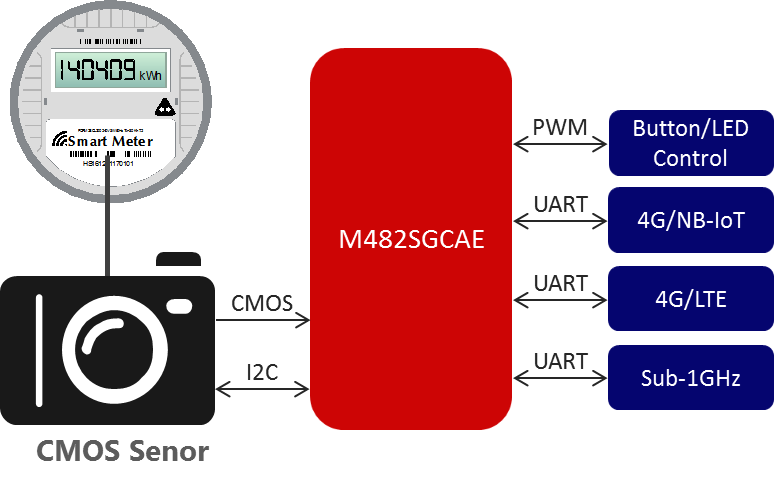Application of Intelligent Numeral Recognition Technology – Traditional Water Meter with Remote Meter Reading Function
Traditional Water Meter Waste Great Amount of Manpower for Meter Reading
The calculation of the traditional water meter rate requires a significant workforce to read the monthly consumption. Maintenance is also challenging to achieve, especially in remote areas. Thus, the water corporation needs to invest in high personnel costs. With the rise of IoT application technology, sending monthly water rates via wireless networks to reduce personnel costs becomes an emerging mainstream. However, the new water meter's overall replacement is time-consuming, not to mention the required expenses. Therefore, in response to this situation, a new alternative is developed.
Installation of Wireless Camera Module – Adopting Intelligent Recognition Technology Based on Machine Learning Algorithm
By installing a CMOS camera module (with wireless transmission function) on the current traditional water meter to regularly take photos of the water rate, intelligent numeral recognition technology can identify the water rate and send it via the wireless module. Nuvoton Technology provides the M482SGCAE development platform based on Cortex-M4 that supports the hardware CMOS interface to receive the photo information (resolution 320x240). With the core of computing speed reaching 192MHz and DSP/FPU hardware accelerator to speed up the numeral recognition of the water rate, the platform transmits the recognized water rate information to the backend cloud of the water corporation via the wireless module for charge management, data storage, and data analysis.

M482SGCAE development platform Advantages
- High-performance computing to complete the intelligent recognition algorithm rapidly – 192MHz + DSP + FPU
- Nuvoton supports software library for deep learning and numeral recognition algorithm – shortening the development time
- Nuvoton provides IoT sample code based on LTE and NB-IoT expansion modules – shortening the development time
- CMOS interface supports hardware binarization function – reducing the demand for SRAM
- Enriching the peripheral by jointing various external modules - PWM, UART, I2C